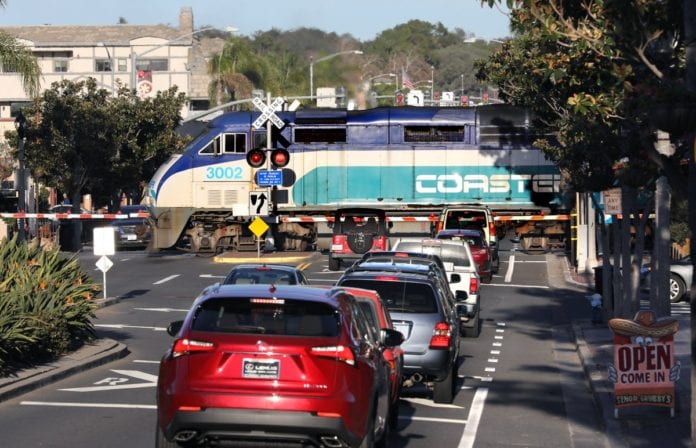The City Council heard an update about efforts to address traffic concerns around Carlsbad, one of the top issues identified by local residents in a recent survey. According to city Traffic Engineer John Kim, the city has seen promising results from a program to reduce speeding in neighborhoods and one that uses technology to synchronize traffic signals.
Speeding in neighborhoods
To reduce speeding in neighborhoods, the city starts with the easiest fixes first, like extra traffic enforcement and speed feedback signs. If that doesn’t make enough of a difference, city traffic engineers work with neighbors to determine next steps, choosing from a range of tools that include different types of speed bumps, narrowing lanes and other physical changes to the street.
The city then surveys the entire neighborhood to make sure the majority agrees with the plan. Once the fixes are made, the city does follow up speed surveys to see how they’re working. In 2018, the most recent year to see full implementation of the agreed upon solutions, all of the neighborhoods participating in the program saw speeds reduced. Ten neighborhoods were added in 2019 and are still working through the process.
To be considered for the program, neighbors should contact the city at transportation@carlsbadca.gov. According to Kim, the city prioritizes streets to make sure city resources are directed toward the areas of greatest need. This means not all streets will qualify, and some neighborhoods will get addressed sooner than others. Kim added that once the process starts, it can take a year or longer to complete.
“We are looking for permanent solutions that are a good fit for each neighborhood,” said Kim
who added that increased enforcement and speed feedback signs often help in the short term while neighborhoods are waiting.
“Non-residential” streets
Some streets are not considered “residential,” even if homes are in the area. That’s because different streets in Carlsbad are designed for different purposes. For example, a street that is used primarily to get from one place to another is different than one mostly used by neighbors to get to their homes.
For these non-residential streets, the city has different tools to reduce speeds depending on the location, traffic volume and other factors.
According to Kim, the city cannot simply reduce the legal speed limit because by law the speed limit needs to be based on how fast people actually drive or else it’s considered a speed trap. That’s why the goal is to slow down traffic mostly using the design of the road. Examples include flashing crosswalk lights embedded in the pavement, flashing beacon lights to call attention to someone entering a crosswalk, narrowing car lanes while widening bike lanes and sidewalks, and extending curbs into the street to shorten the crosswalk and create a visual cue to drivers to slow down.
Non-residential streets currently undergoing design changes to slow traffic include:
Kelly Drive near Park Drive
Carlsbad Boulevard
Tamarack Avenue around Valley Street
Traffic signal improvements
The City of Carlsbad started updating its traffic signal technology in 2011.
Created a wireless communication network linking 170 traffic signals.
Built a traffic management center where information from the signals could be monitored remotely and adjustments could be made from a central location as needed.
Upgraded vehicle detection (camera) equipment at intersections.
Installed an automated traffic monitoring system.
Created signal timing plans on major streets to ease rush hour traffic and other peak times.
Built additional turn lanes and other lane configurations on heavily traveled streets to ease congestion.
Following these changes travel time on Carlsbad’s two major corridors, El Camino Real and Palomar Airport Road, was reduced between 25% and 40%, depending on the time of day. Carlsbad’s overall traffic signal score went from a D+ to a B-, based on a report card issued by the National Transportation Operations Coalition.
What’s next
The city is almost done upgrading traffic signals with a new technology that will enable them to adapt to traffic conditions in real time. About 100 traffic signals have already been completed, and the rest should be done by this spring. With this new technology, residents can expect to see continued improvement in the efficiency of local roads, meaning less time waiting in traffic overall.
Related information
Semiannual transportation report, Jan. 28, 2020
Residential traffic management program
More information
John Kim, City Traffic Engineer, john.kim@carlsbadca.gov, 760-602-2757


















